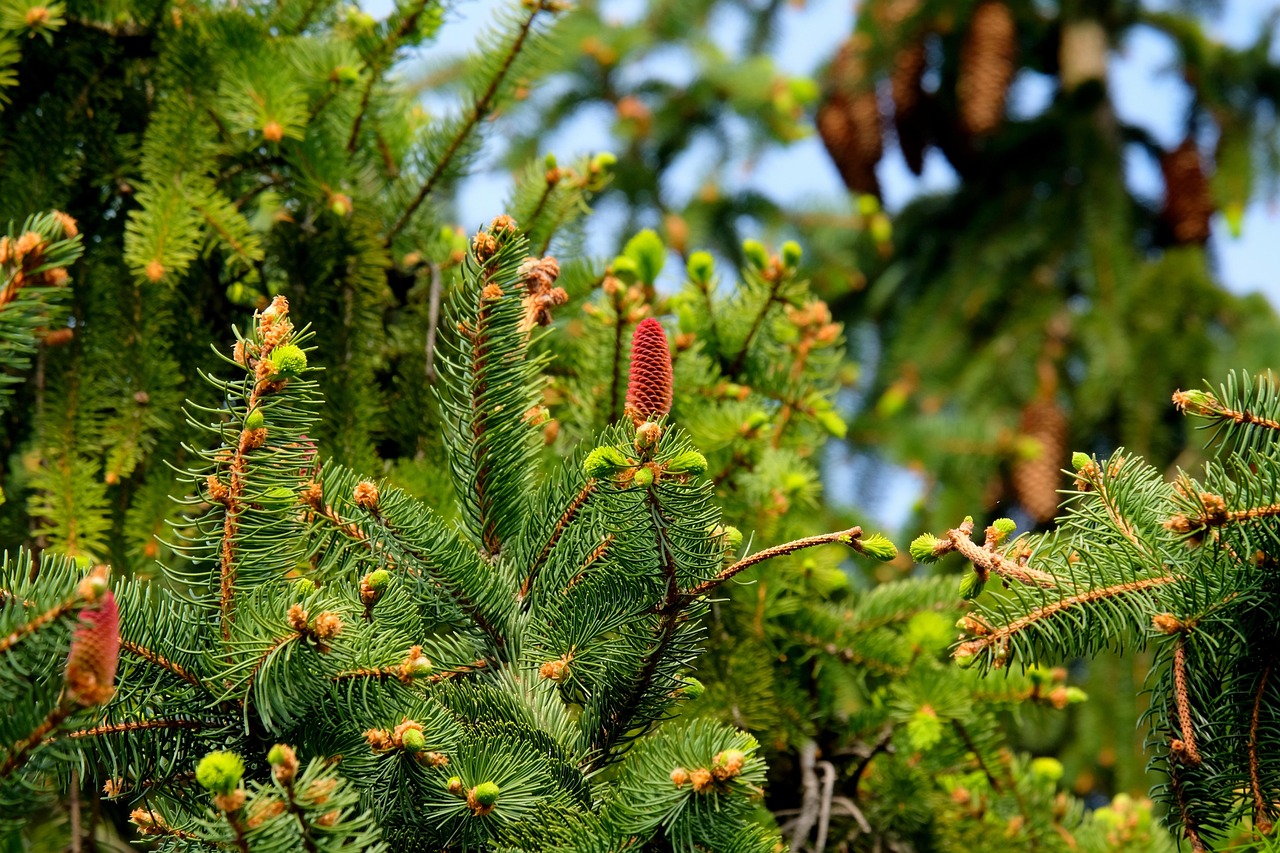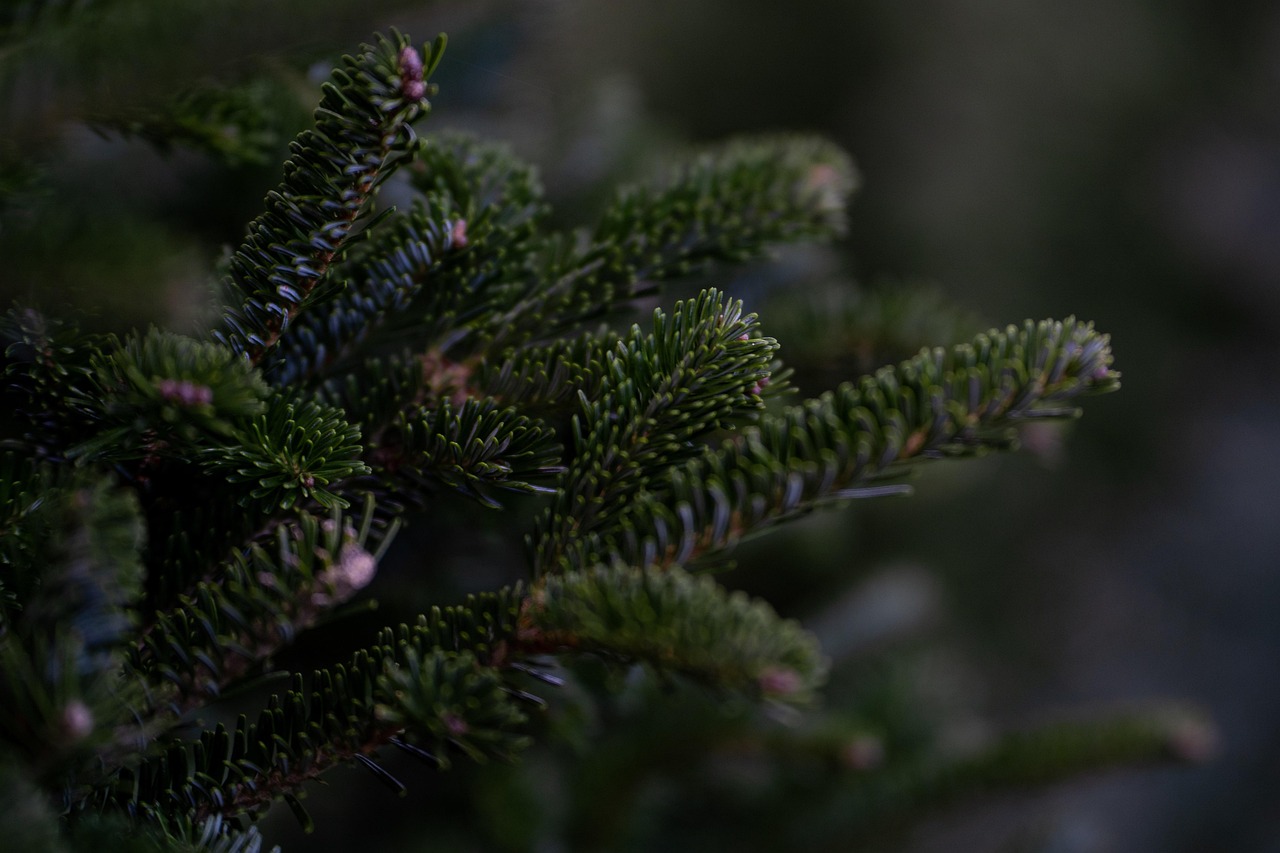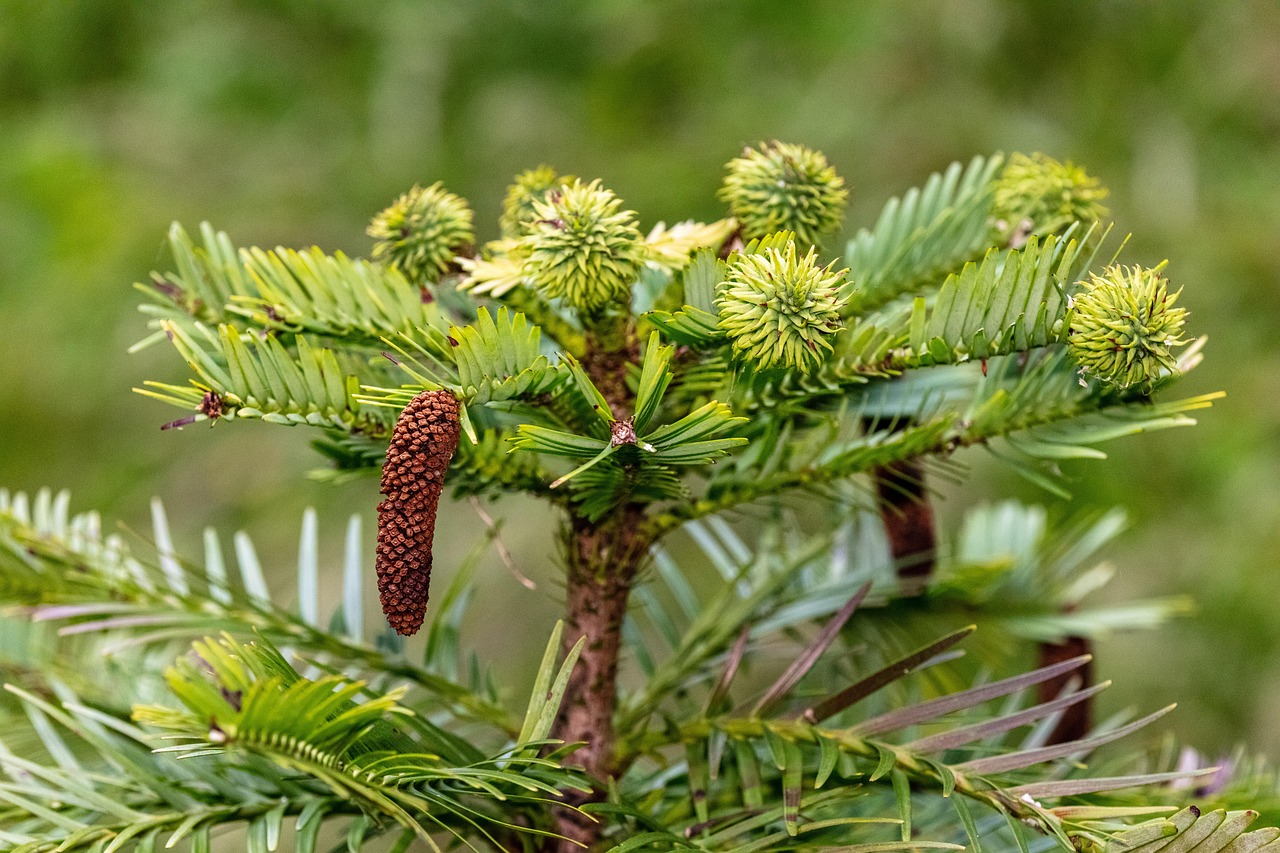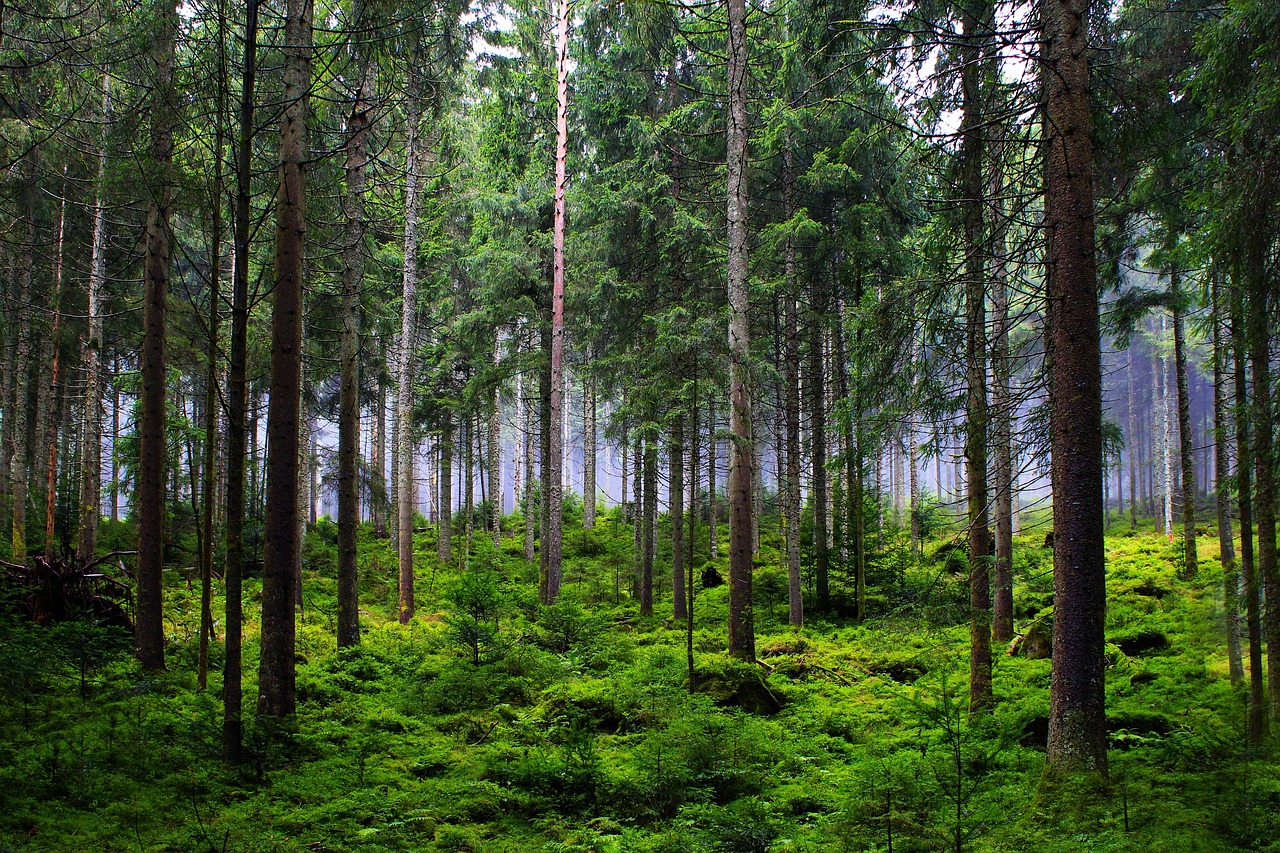Douglas fir trees have adapted to their environment through a combination of drought resistance, fire resilience, and the ability to thrive in various soil types. Their needle-like leaves minimize water loss, while thick bark protects against fire damage, allowing them to survive and regenerate in challenging conditions.
Douglas fir trees, scientifically known as Pseudotsuga menziesii, are a prominent species found primarily in the western regions of North America. These majestic trees can reach heights of over 300 feet and live for several hundred years. Their adaptability has allowed them to flourish in a range of environments, from coastal areas to mountainous terrains. Understanding how these trees have evolved to meet the demands of their ecosystems is crucial for both ecological studies and forest management practices.
One of the most notable adaptations of Douglas fir trees is their needle-like leaves, which help reduce water loss. The leaves are typically evergreen, allowing the tree to photosynthesize throughout the year. This feature is particularly advantageous in areas where water may be scarce during certain seasons. The waxy coating on the needles further aids in preventing moisture loss, making it easier for the tree to survive during dry periods.
Another significant adaptation is the tree’s thick bark. This bark serves multiple purposes. It acts as insulation against extreme temperatures and protects the inner wood from insects and pathogens. More importantly, the thick outer layer provides a barrier against fire, a common occurrence in many of the habitats where Douglas firs grow. This fire resilience is crucial for their survival, as many forest ecosystems depend on fire for regeneration.
Ecological Importance

Douglas fir trees play a vital role in their ecosystems. They provide habitat and food for various wildlife species, including birds, mammals, and insects. The cones of Douglas firs are a significant food source for squirrels and birds, while their foliage supports diverse herbivores.
Furthermore, these trees contribute to soil stability and health. The extensive root systems of Douglas firs help anchor the soil, preventing erosion on slopes and in riparian zones. Their fallen needles contribute organic matter to the forest floor, enriching the soil and promoting a healthy ecosystem.
| Adaptation | Description |
|---|---|
| Needle-like Leaves | Minimize water loss and allow year-round photosynthesis. |
| Thick Bark | Provides protection against fire and pests. |
| Extensive Root System | Helps prevent soil erosion and supports soil health. |
| Fire Resilience | Ability to regenerate after fire events. |
The ability of Douglas fir trees to adapt to various environmental stresses also allows them to compete effectively with other tree species. In many forests, they are dominant due to their rapid growth rates and adaptability to different soil types and moisture levels. This competitive advantage ensures that they can thrive even in less than ideal conditions.
As climate change continues to impact ecosystems globally, understanding the adaptations of Douglas fir trees becomes even more essential. Their resilience may provide insights into how forest ecosystems can adapt to changing conditions while supporting biodiversity and ecological health.
Growth and Reproductive Strategies
Douglas fir trees exhibit unique growth and reproductive strategies that enhance their survival in various environments. These strategies allow them to maximize their potential for growth while ensuring successful reproduction even under challenging conditions.
Growth Patterns
Douglas firs are known for their impressive growth rates, particularly in the early stages of life. They can grow up to 3 feet per year under optimal conditions. This rapid growth is facilitated by several factors:
- Optimal Light Conditions: Douglas firs thrive in areas with ample sunlight, which promotes robust photosynthesis.
- Soil Nutrients: They prefer well-drained soils rich in nutrients that support healthy growth.
- Moisture Availability: While drought-resistant, these trees benefit from consistent moisture during their early years.
Their ability to grow quickly gives them a competitive edge over slower-growing species, allowing them to reach the canopy and access more sunlight. This light advantage further enhances their growth and the overall health of the tree.
Reproductive Adaptations
The reproductive strategies of Douglas fir trees are also remarkable. They produce cones that contain seeds, which are essential for propagating the species. The following points outline their reproductive adaptations:
- Seed Production: Douglas firs can produce hundreds of cones each year, leading to a significant number of seeds available for germination.
- Seed Dispersal: The cones open in response to heat, allowing seeds to be released after a fire event. This adaptation ensures that seedlings can take advantage of nutrient-rich ash in the soil.
- Seed Dormancy: Seeds remain dormant until conditions are favorable for germination, such as adequate moisture and sunlight.
These reproductive adaptations ensure that Douglas firs can establish new populations in various environments, even after disturbances such as forest fires.
Interactions with Other Species
Douglas fir trees do not exist in isolation; they play an integral role in forest ecosystems. Their interactions with other species contribute to the overall health and balance of the environment.
Symbiotic Relationships
Douglas firs engage in symbiotic relationships with various organisms. One of the most significant interactions is with mycorrhizal fungi.
- Mycorrhizal Fungi: These fungi form associations with the roots of Douglas firs, enhancing nutrient absorption, particularly phosphorus and nitrogen. In return, the tree provides carbohydrates to the fungi.
- Wildlife Habitat: Douglas firs provide shelter and food for numerous wildlife species. Birds often nest among their branches, while mammals may feed on their cones.
Pest Interactions
While Douglas firs are generally resilient, they can also be affected by pests and diseases. Understanding these interactions is vital for managing forest health.
- Bark Beetles: These insects can pose a threat to Douglas firs, particularly during periods of drought when tree vigor is low. Infestations can lead to tree decline or death.
- Foliar Diseases: Fungal pathogens can affect needle health, impacting photosynthesis and overall tree vitality.
Forest management practices often aim to monitor and mitigate the impacts of these pests to maintain healthy Douglas fir populations.
Environmental Challenges and Resilience
As Douglas fir trees adapt to their environments, they also face various challenges presented by climate change and ecological disturbances. Their resilience is evident in several ways:

- Drought Tolerance: Their deep root systems allow them to access moisture from deeper soil layers during dry spells.
- Fire Adaptation: As previously mentioned, thick bark protects them from surface fires, while their ability to regenerate after fire events ensures their survival.
- Nutrient Utilization: Douglas firs can efficiently utilize available nutrients, even in poor soil conditions.
This resilience enables Douglas fir trees to thrive in fluctuating environments while contributing to the biodiversity and stability of forest ecosystems.
Climate Change Impact on Douglas Fir Trees

The effects of climate change on forest ecosystems are becoming increasingly evident. Douglas fir trees, like many other species, are experiencing changes in their growth patterns, health, and distribution due to shifting climatic conditions. Understanding these impacts is crucial for forest management and conservation efforts.
Temperature Changes
One significant impact of climate change is the increase in average temperatures. This rise can have various effects on Douglas fir trees:
- Extended Growing Seasons: Warmer temperatures can lead to longer growing seasons, which may initially benefit tree growth. However, this can also result in increased stress during hotter months.
- Altered Phenology: Changes in temperature can affect the timing of key life events, such as bud burst and cone production. This can disrupt the synchronization between trees and pollinators or seed dispersers.
- Increased Pest Activity: Warmer temperatures can lead to more frequent and severe pest outbreaks, as species like bark beetles thrive in milder winters.
Changes in Precipitation Patterns
Alongside temperature changes, altered precipitation patterns pose a challenge for Douglas fir trees. These changes can manifest in several ways:
- Drought Conditions: Reduced precipitation during critical growth periods can stress trees, potentially leading to decreased growth rates and increased susceptibility to disease.
- Flooding Risks: Conversely, heavier rainfall events can lead to soil erosion and increased competition with other species for nutrients and water.
- Soil Moisture Variability: Fluctuating soil moisture levels can affect root development and overall tree health.
Forest Management Strategies
To mitigate the impacts of climate change on Douglas fir trees, effective forest management strategies are essential. These strategies aim to enhance resilience and promote sustainability within forest ecosystems.
Adaptive Management Practices
Adaptive management involves adjusting practices based on ongoing monitoring and research. Some key strategies include:
- Selective Logging: Implementing selective logging practices can help maintain biodiversity while allowing for healthy growth of Douglas firs.
- Mixed-Species Plantations: Encouraging the growth of diverse species alongside Douglas firs enhances resilience against pests and diseases.
- Monitoring Forest Health: Regular assessments of tree health and pest populations can inform timely interventions to address emerging threats.
Restoration Efforts
Restoration projects can also play a crucial role in promoting healthy Douglas fir populations. These efforts often focus on:
- Reforestation: Planting Douglas fir seedlings in areas where they have been lost due to logging or natural disturbances helps restore forest cover.
- Soil Improvement: Enhancing soil health through organic amendments can support the growth of Douglas firs and other tree species.
- Creating Wildlife Corridors: Establishing pathways for wildlife movement ensures genetic diversity and promotes ecosystem health.
Cultural Significance of Douglas Fir Trees

The Douglas fir tree holds cultural significance in many regions, particularly among Indigenous peoples. Their traditional knowledge reflects a deep understanding of the tree’s ecological role and uses.
Traditional Uses
Many Indigenous communities have historically utilized Douglas firs for various purposes:
- Construction Materials: The strong and durable wood of Douglas fir has been used for building homes, canoes, and tools.
- Cultural Ceremonies: Douglas fir boughs are often used in rituals and ceremonies, symbolizing strength and resilience.
- Medicinal Uses: Various parts of the tree, including its bark and needles, have been used in traditional medicine.
Modern Conservation Efforts
Today, collaboration between Indigenous communities and conservation organizations is essential for protecting Douglas fir forests. These partnerships often focus on integrating traditional ecological knowledge with modern conservation techniques to ensure the sustainability of these vital ecosystems.
Ultimately, understanding both the ecological adaptations of Douglas fir trees and their cultural significance can inform better management practices that honor both nature and heritage.
Future Prospects for Douglas Fir Trees
As we look toward the future, the resilience and adaptability of Douglas fir trees will be tested by ongoing environmental changes. The impacts of climate change, coupled with increasing human activity, present both challenges and opportunities for these trees.
Research and Monitoring
Ongoing research is crucial for understanding how Douglas firs can adapt to changing conditions. Key areas of focus include:
- Genetic Studies: Research into the genetic diversity of Douglas fir populations can help identify traits that confer resilience to drought, pests, and diseases. This knowledge can inform breeding programs aimed at developing more resilient tree varieties.
- Climate Modeling: Predictive models are essential for assessing future climatic impacts on Douglas fir habitats. These models can help identify areas at risk and guide conservation efforts.
- Long-term Ecological Studies: Monitoring forest health over extended periods provides valuable data on growth patterns, pest dynamics, and ecosystem changes, allowing for adaptive management strategies.
Community Involvement
The role of local communities in conservation efforts cannot be overstated. Engaging the public in forest management initiatives fosters stewardship and a sense of responsibility toward these vital ecosystems. Community-based projects may include:
- Volunteer Planting Programs: Encouraging local residents to participate in reforestation efforts helps restore degraded areas while cultivating a connection to nature.
- Educational Workshops: Providing information about the ecological importance of Douglas firs and sustainable forest practices can empower communities to advocate for their protection.
- Citizen Science Initiatives: Involving the public in monitoring tree health and biodiversity can enhance data collection efforts and raise awareness about environmental issues.
Final Thoughts
The Douglas fir tree stands as a testament to nature’s ability to adapt and thrive in diverse environments. Its unique adaptations, such as drought tolerance, fire resilience, and symbiotic relationships with other species, highlight its ecological significance. Furthermore, the cultural importance of Douglas firs emphasizes the need for a holistic approach to conservation that respects both ecological and cultural values.
As climate change continues to reshape ecosystems, proactive research and community engagement will be vital in ensuring the survival of Douglas fir forests. By integrating traditional knowledge with contemporary conservation practices, we can foster resilient forests that benefit both nature and humanity.
In summary, Douglas fir trees are not just important for their timber; they are integral to the health of forest ecosystems, supporting wildlife, preventing soil erosion, and contributing to carbon storage. Protecting these trees is essential not only for biodiversity but also for maintaining the cultural heritage of communities that depend on them. Through continued efforts in research, community involvement, and adaptive management practices, we can ensure that Douglas fir trees thrive for generations to come.
